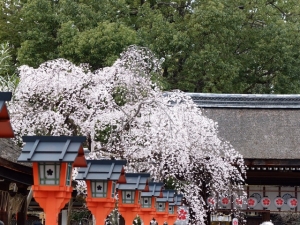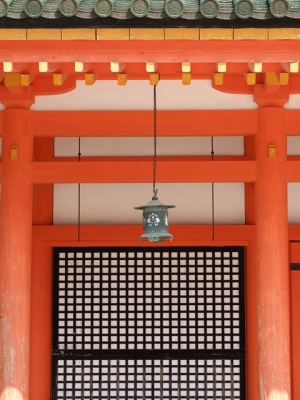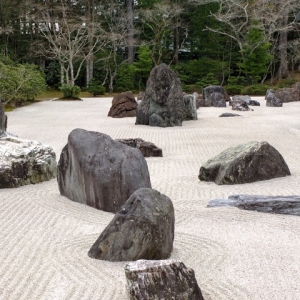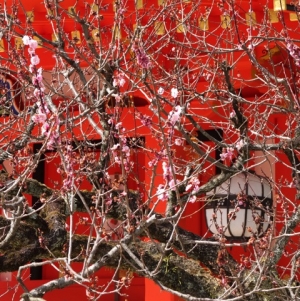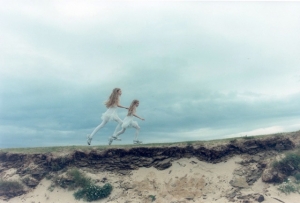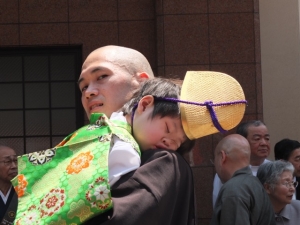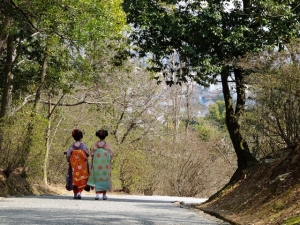It was late at night in August 2004 in a bar in downtown Reykjavík, when a Japanese girl came to me and asked some questions. She was doing a photography project and needed help. We started talking and decided to go on a a trip the next day. We slowly realized we had found a soul sister from the other side of the planet. Since then she has been in Iceland every year, and together we have worked on many projects, she photographing, I producing. She has been focusing on photographing girl twins in Reykjavík since 2006, Erna and Hrefna, and this year the last photos will be taken. It is time for us to organize a book publication and exhibitions.
I flew into Tokyo where my other Japanese photographer friend, Takeshi Myiamoto showed me around for two days. It was my first time in Tokyo and I was surprised how unagressive and unpolluted it is. The thought of such a big city had me have claustrophobic thoughts but Japanese people are kind, disciplined and have the idea of harmony at the core of their mentality. Thus, even in massively crowded streets at rush hour, I didn´t feel the agression that such big cities most often have. With more than 20 million inhabitants, Tokyo works like a machine to my eyes. I went on a rollercoaster ride in the middle of the city near Tokyo dome, amidst skyscrapes at night, probably the wildest thing I have ever done. The architecture of the city amazed me. Asymmetrical skyscrapers and houses where people try to place a tiny garden everywhere they can. The whole city burned down in the 1920´s and few if any houses are older than that time. The language, the letters, the architecture, the high level of aestetics, the endless hidden layers of meaning in symbols and people´s behaviour. These are all fascinating mysteries to me.
I had been to Ariko´s wedding in Kyoto three years ago. I had spent two weeks bicycling around the old city through the scent of incence from the temples and shrines and the scent of all the flowers people take such beautiful care of everywhere. It was a spiritual experience. At the core of the Japanese mentality is a tremendous attention to detail. This applies to everything. Wrapping, architecture, punctuality, presentation of food and other things, the materials and fabrics of houses and clothes, ceramics, colours and colour combinations, everything. As a visual being, Japanese culture is the highest level of aestetics I have ever experienced, I was then, and now again close to tears by the overwhelming beauty I encountered every day. Attention to detail does not however mean that they are striving for perfection, since the idea of life´s imperfection is another element of the Japanese mentality. This contradiction, one might think, is a philosophy called Wabi-Sabi and refers to the quintessential Japanese aestetics. It applies to material things as well as a mentality. It is natural and earthy. It is a mentality of acceptance and appreciation of the natural state of things and their decay. It is difficult to write about it in a few words, but one can see it´s influence for example in the art of Japanese ceramics.
I spent a day in Arasyiama where there is a bamboo forest, beautiful temples and a mountain full of monkeys. I was fortunate to be there during the sakura season and trees where blossoming in white and pink everywhere to add to the beauty of it all. Ariko invited me to Koyasan where we stayed the night at a Buddist temple. I had a blessing from the monks and woke up before 6 am to hear their chanting. I drank a cup of coffee in front of a zen garden and had a bath in a natural hot spring at the temple.
Ariko worked as a photograper in New York and Tokyo for 20 years before she took on the responsibility of a manager of her father´s restaurant in Kyoto in 2008. It is called Honke Owaryia and has been running in the family from father to son since 1465, that is 551 year. I consider my encounter with Ariko to be one of the biggest fortunes of my life. I am grateful beyond words to have the privilage to discover Japan, all its endless beauty and mysteries through her.
I am deeply grateful to The Watanabe foundation to have faith in our project and supporting my trip. It is with great excitement that we are embarking on the final stage of the twin project, to organise exhibitions in four countries. We hope it will bring positive attention to both Japan and Iceland.
The photographs attached are mine except one of the twins by Ariko.
Ragnheiður Pálsdóttir

